This burnt basque cheesecake is enveloped in a caramelized crust with a creamy, rich interior. This cheesecake is from the Basque region of Spain and is quickly become my go-to dessert to make.
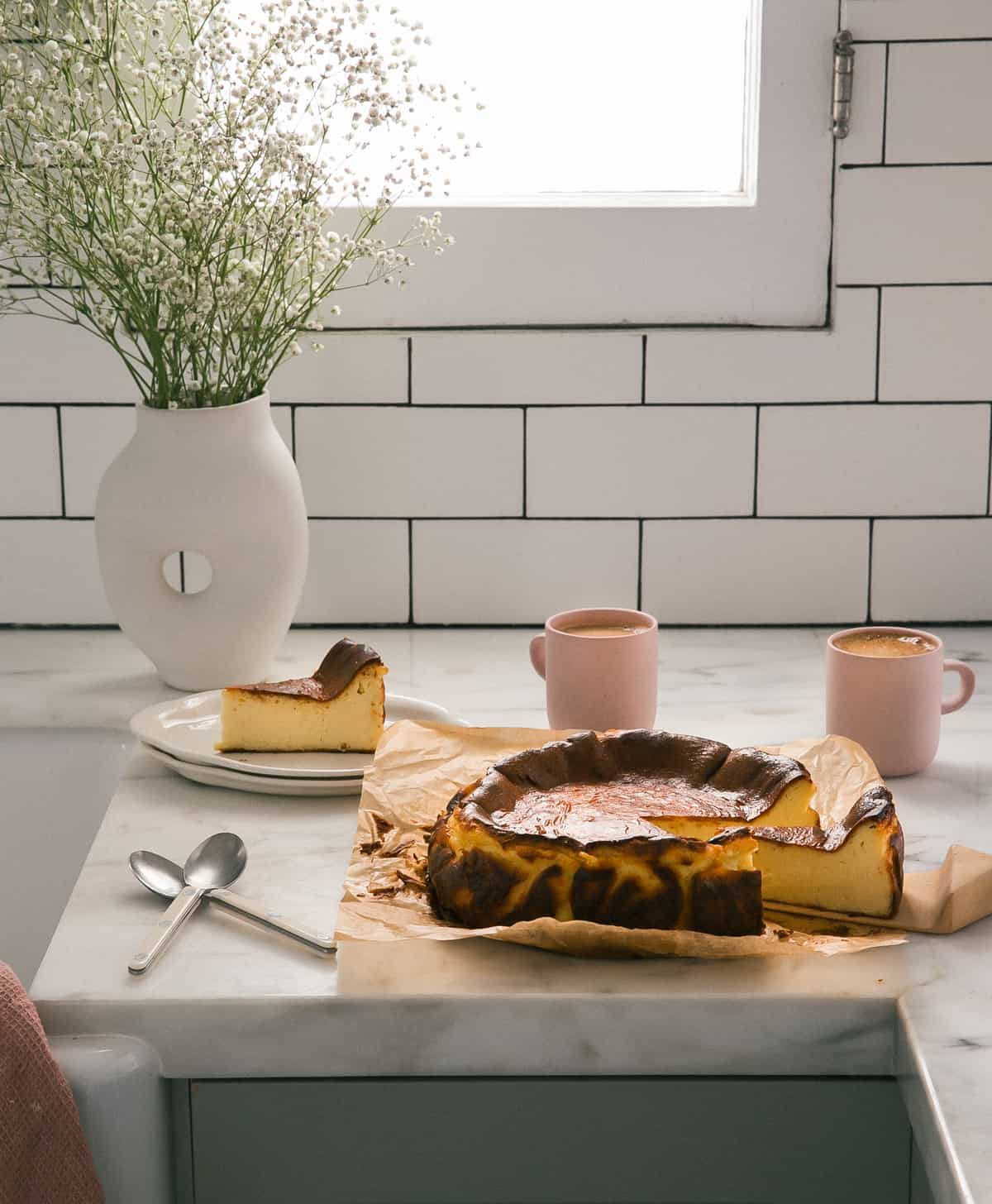
I lived way too long without having basque cheesecake in my life. And I’m guessing you have too! If you haven’t had it, I’m happy to attempt to convince you to make this ASAP.
And while I love cheesecake (including but not limited to my Marbled Chocolate Cheesecake Pumpkin Pie, Matcha Swirl Cheesecake and Dulce de Leche Cheesecake Bars), Basque Cheesecake is wildly different.
What Is Basque Cheesecake
Excuse my ignorance but when I first went to research this cheesecake, I thought it was going to go WAY back to the 1800s or something lol. But instead, I found that basque burnt cheesecake first started to get popular in the 1990s in San Sebastian, Spain. Apparently a little restaurant called La Viña invented this burnt-topped silky smooth cheesecake that defies all cheesecake rules.
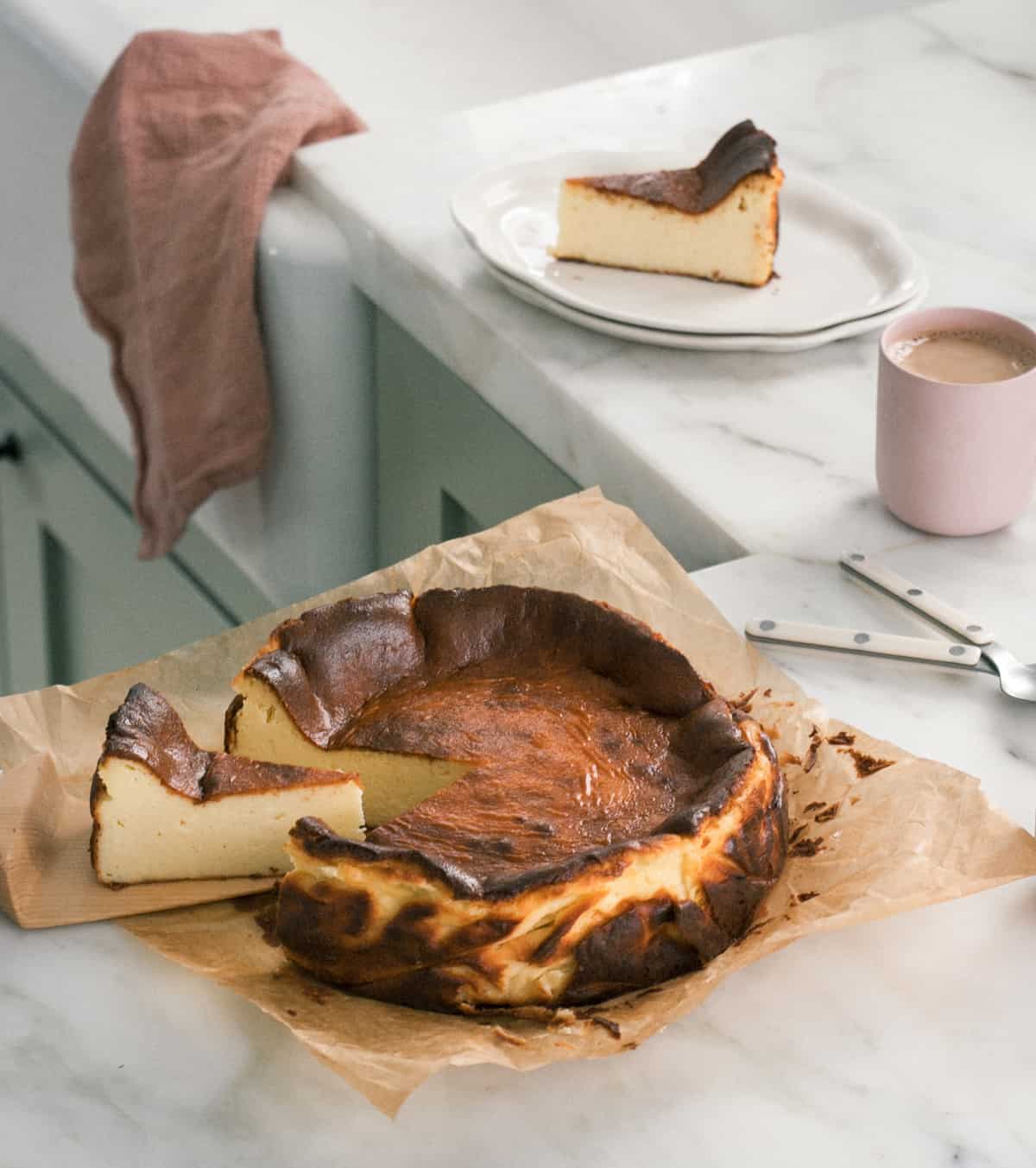
whats the difference between basque cheesecake and regular cheesecake
Firstly, there is zero crust, zero water bath. And it has its notably burnt exterior that is 100% planned and intentional. I like to think that its interior is more custard-like versus a fluffy cream cream cheese-type texture.
This one is creamy but not too creamy. If you want it to be on a near collapse-able creaminess, you can add less flour (32 grams to be exact).
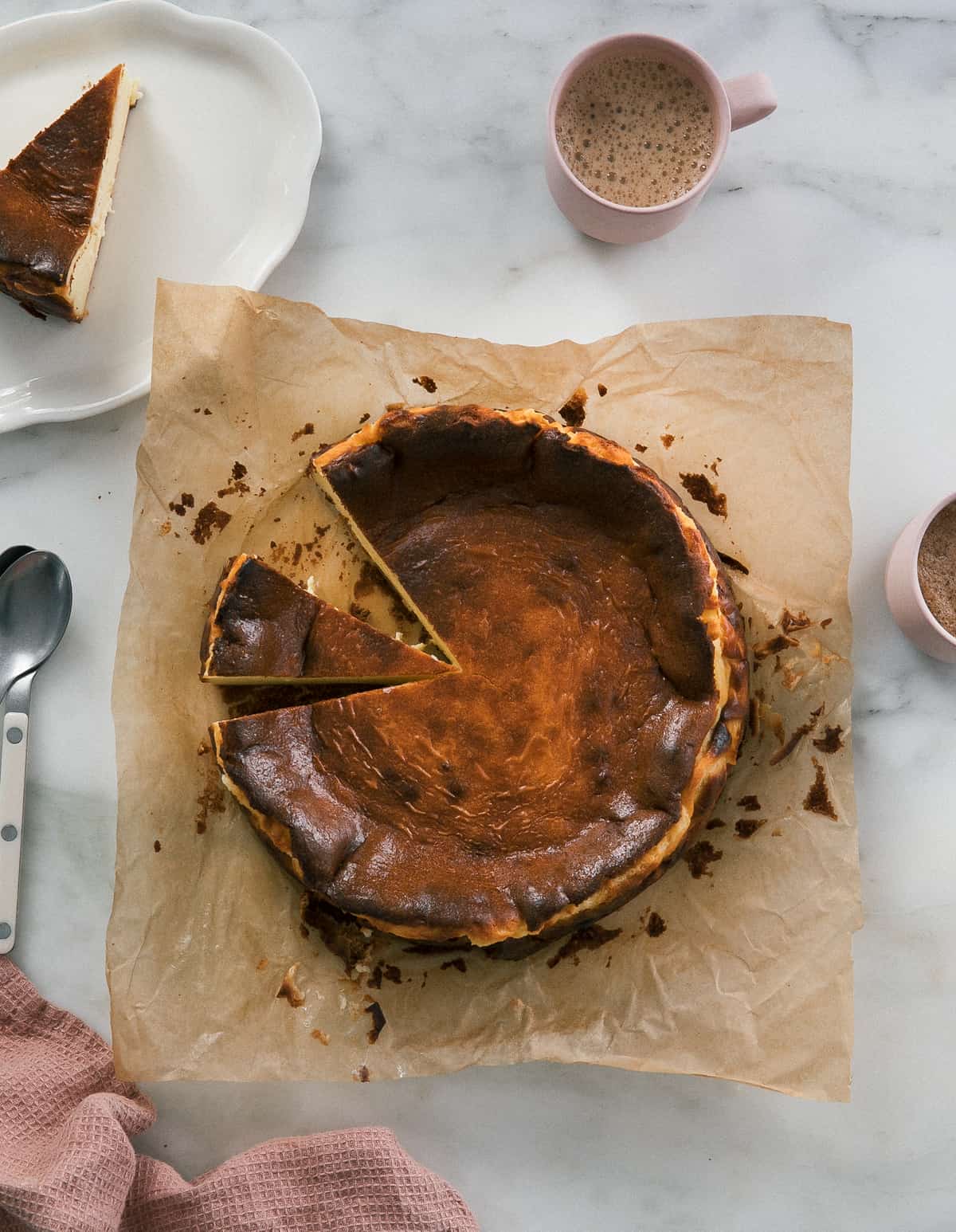
How to Make Basque Cheesecake
- You can use an electric hand mixer and a large bowl OR a stand-up mixer with the paddle attachment. Either way, add the cream cheese to a bowl.
- Beat it until smooth. Pour in the sugar and vanilla seeds (or vanilla extract) and beat it until fluffy, about 2 minutes.
- Next, crack in one egg and mix it in until combined. Add the next egg and repeat with eggs until it’s combined.
- Pour in the heavy cream in a slow and steady stream. And beat it until it’s incorporated and smooth.
- Lastly, you’re going to sift in the flour. The sifting part is important because you want it to melt into the batter.
- Mix it in and then pour the mixture into the prepared pan. Bake it up!
- When it’s done, it’ll be golden brown on top and super jiggly.
- Let it set at room temperature for a few hours. It’ll fall as it cools. Slice it up and serve it.
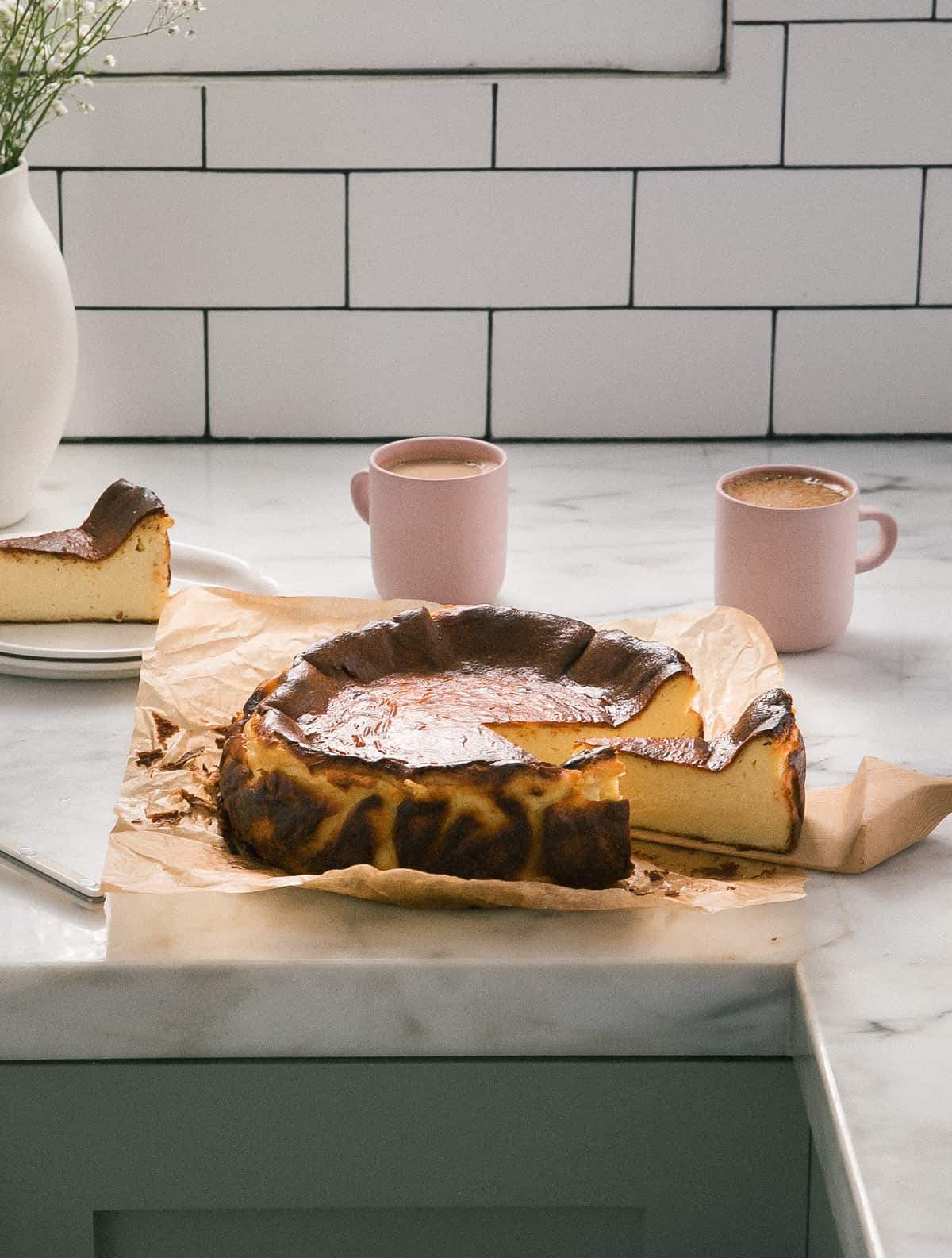
What to Serve with Basque Cheesecake
Nothing. I’m serious. This cheesecake doesn’t need a fruit compote or a syrup or a chocolate sauce. Nothing. It’s supposed to be eaten at room temperature and completely on its own. You’ll understand when you take the first bite.

Tips and Tricks
- Cream cheese – This recipe is super easy. But be sure to beat the cream cheese first. Just to ensure total smoothness.
- Vanilla substitution – If you don’t have a vanilla bean pod, just use 2 teaspoons of extract.
- Buttering the pan! – The butter in the pan seems strange because we’re using parchment but it helps with the parchment sticking to the pan and not moving. Make sure the parchment paper goes up the sides of the cake pan.
- Avoiding it from cracking – A lot of cheesecakes will crack when they’ve fluctuated from the oven to a shockingly cooler temperature, i.e., the room temperature in your kitchen. To avoid it from cracking, I like to open the oven door slightly toward the end of baking so it can gradually come to room temperature.
- How To Tell if Basque Cheesecake is Done – You’ll know when the timer goes off. It should jiggle in the center. Don’t worry, it will set. You want it to be creamy in the center.
- Can I Freeze Basque Cheesecake – Yes! Be sure to allow it to thaw completely in the fridge before serving.
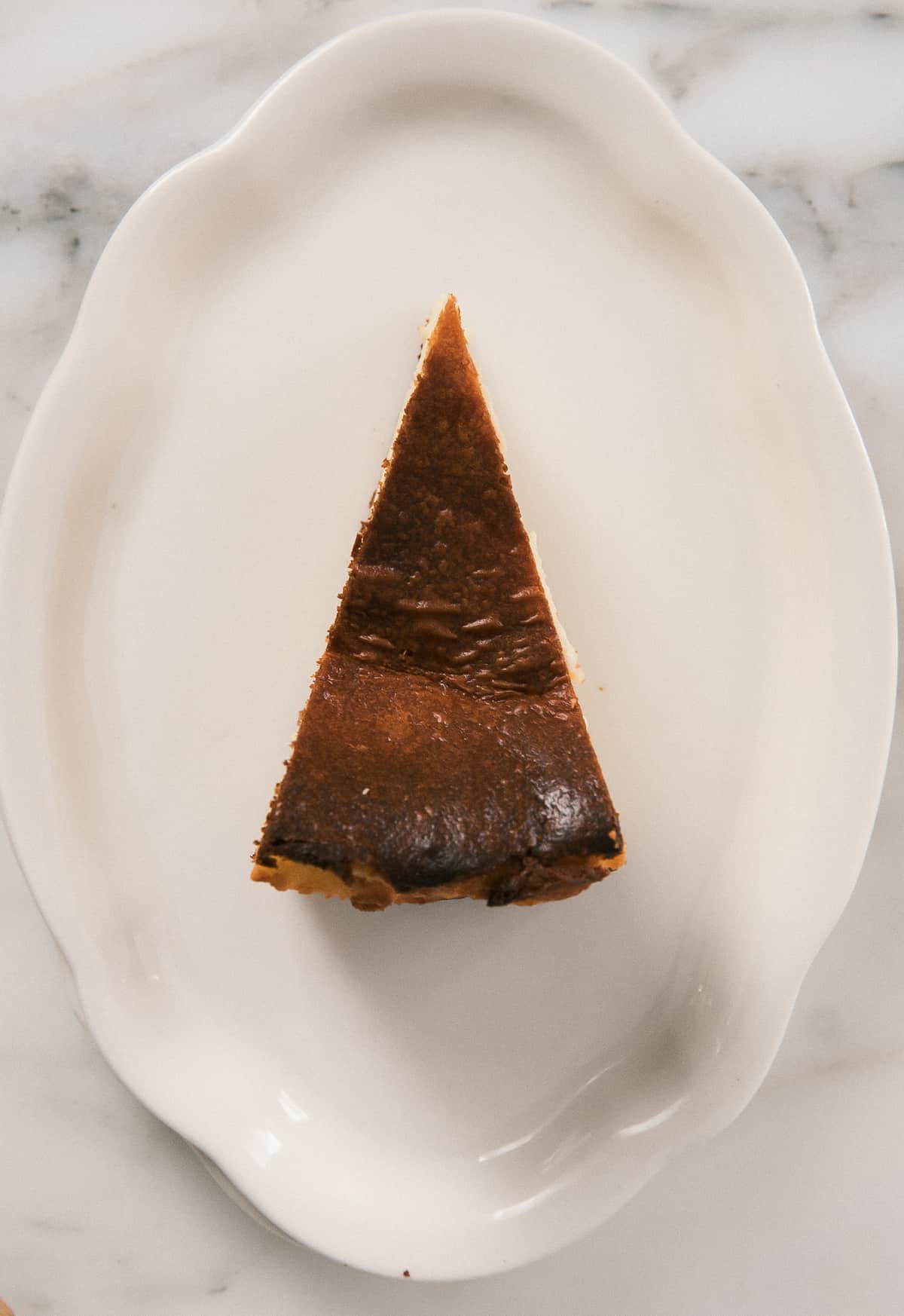
recipe faqs
Why is Basque Cheesecake so popular?
I feel like basque cheesecake in part grew its popularity thanks to TikTok. I saw it everywhere on that app and that’s what convinced me that I must try it!
What does Basque Cheesecake taste like?
It’s light and airy with a delicious burnt, caramelized flavor.
If you tried these Basque Cheesecake or any other recipe on my website, please leave a star rating and let me know how it went in the comments below. Thanks for visiting!
Looking for more holiday recipes? Here are some favorites:
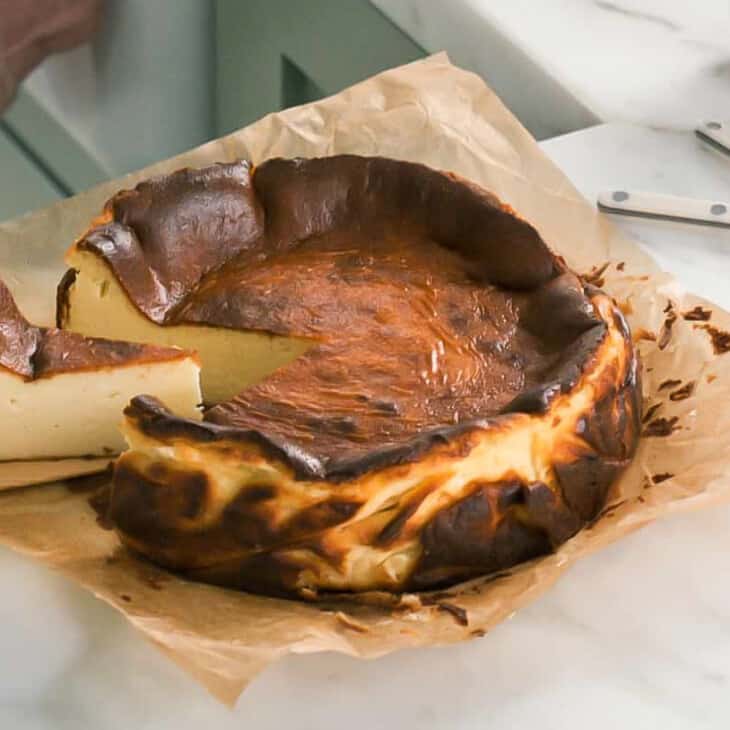
Print Recipe
Basque Cheesecake
This burnt basque cheesecake is enveloped in a caramelized crust with a creamy, rich interior. This cheesecake is from the Basque region of Spain and is quickly become my go-to dessert to make.
Serving Size:
Instructions
To Prep the Pan:
-
Rub an 8-inch cake pan with about 1 teaspoon of softened butter. This will help the parchment stick to it. Then press a sheet of parchment into the cake pan, pressing it up the sides and making sure it’s as close and secure to the pan as possible. Set aside.
To Make the Cheesecake:
-
Preheat the oven to 400 degrees F.
-
You can do this with an electric hand mixer or stand-up mixer. Add the cream cheese to the bowl and beat it until smooth. Pour in the granulated sugar and vanilla beans (or vanilla extract) and beat it until smooth and fluffy, about 1 minute. Next, crack in one egg at a time, mixing it in before adding the following one. Repeat until you’ve worked your way through the eggs. Add the salt and pour in the heavy cream in a slow and steady stream and mix until combined, about 1 minute. Lastly, sift in the flour and mix it in until just incorporated.
-
Pour the cheesecake mixture into the prepared pan and smooth out the top. Smack it on the counter a few times so make sure it gets in those crevices
-
Place the baking pan on a baking sheet (I do this in case there’s any spillage–there shouldn’t be) and transfer to the oven to bake for 45 to 50 minutes, until the cheesecake is puffed up and jiggly. Remove from the oven and allow to cool in the pan for about 1 hour. Remove it from the pan by lifting up the excess parchment. Allow it to cool for another hour.
-
As it cools, the cheesecake will fall in size and firm up. Peel off the parchment and slice it up. I like to serve this cheesecake by itself at room temperature.
-
I store the cheesecake in an airtight container at room temperature. You’re welcome to store it in the fridge if you like too.
Notes
Tips and Tricks
- This recipe is super easy. But be sure to beat the cream cheese first. Just to ensure total smoothness.
- If you don’t have a vanilla bean pod, just use 2 teaspoons of extract.
- The butter in the pan seems strange because we’re using parchment but it helps with the parchment sticking to the pan and not moving.
- Make sure the parchment paper goes up the sides of the cake pan.
Equipment:
Baking Sheets | KitchenAid Stand-Up Mixer | 8-inch Cake Pan | Parchment Sheets | OXO Measuring Cups | OXO Measuring Spoons |
Nutrition
Serving: 8g | Calories: 271kcal (14%) | Carbohydrates: 30g (10%) | Protein: 1g (2%) | Fat: 17g (26%) | Saturated Fat: 10g (63%) | Cholesterol: 61mg (20%) | Sodium: 163mg (7%) | Potassium: 39mg (1%) | Fiber: 1g (4%) | Sugar: 25g (28%) | Vitamin A: 656IU (13%) | Vitamin C: 1mg (1%) | Calcium: 29mg (3%) | Iron: 1mg (6%)
